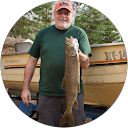Asian Longhorned Beetle Facts
Asian Longhorned Beetle Facts: what you need to know about Asian Longhorned Beetles and the threat they pose to our trees
What trees do Asian longhorned beetles attack?
Asian Longhorned Beetle (Anoplophora glabripennis) is a non native invasive species of beetle that attacks hardwood trees. It mainly feasts on maples but it also attacks birches, poplars, willows and elms.
What does the Asian Longhorned Beetle do to trees?
Asian Longhorned Beetles damage trees in a number of different ways. Firstly, the female Asian Longhorned Beetle chews cavities in the tree either in its trunk or in the junctions of branches and the trunk in which to lay eggs. Secondly, as the larvae grow, they invade the tree’s heartwood. When large numbers of beetle larvae feed on the trees they can kill them by girdling them.
Finally when the new generation of adult beetles mature, they wound the trees as they emerge in the summer through holes in the bark which measure 3/8″ in diameter. These wounds cause a heavy flow of sap which in turn attracts additional attacks by other diseases and insects.
How does the Asian Longhorned Beetle affect the ecosystem?
The Asian Longhorned Beetle has not yet spread to any degree within Canada, but the potential threat to our ecosystem is enormous. An infestation of Asian Longhorned Beetles will either kill trees directly or make them susceptible to other tree diseases and pests. Their love of hardwoods means they threaten our forests and urban tree canopy. And because Asian Longhorned Beetles primarily target maples, they pose a major threat to our maple syrup industry.
Where is the Asian Longhorned Beetle found in Canada?
So far there have only been sightings of the Asian Longhorned Beetle in Ontario.
Where and when was the Asian Longhorned Beetle found in Ontario?
There was an outbreak of Asian Longhorned Beetles on the border of Toronto and Vaughan in 2003. This was successfully eliminated. The second outbreak was on the border of Toronto and Mississauga in 2013, and infested trees were removed. It is still being monitored.































